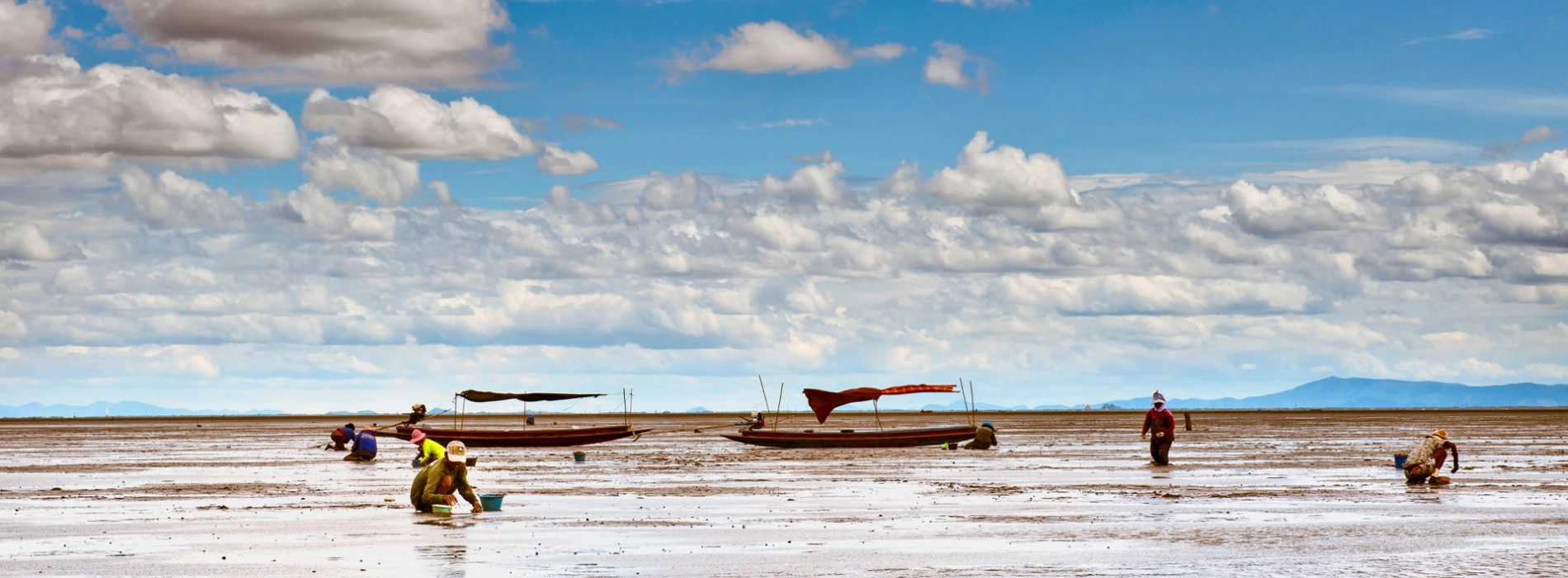Don Hoi Lot

Don Hoi Lot is a seaside location in Samut Songkhram Province, Thailand, known for its distinctive natural characteristics and tasty seafood. Don Hoi Lot has the ideal combination of natural beauty, cultural activities, and gourmet pleasures, making it a must-see destination for anybody experiencing Thailand's bustling coastal area.
Let’s explore this special seaside with Asia King Travel!
Don Hoi Lot has a rich history that stems from its coastal topography and cultural significance. It dates back centuries and functioned as an important commercial hub during the Ayutthaya period, supporting business and cultural interchange along Thailand's Gulf. The area's name, "Don Hoi Lot," reflects its defining feature: vast mud flats teeming with razor clams that have supported local populations for decades.
.jpg)
History of Don Hoi Lot
Don Hoi Lot has long been a center for traditional livelihoods like fish and oyster harvesting. These activities have changed not just the local economy, but also the region's gastronomic history, with razor clams becoming a renowned delicacy.
Don Hoi Lot, a pristine sandbar near the entrance of the Mae Klong River, is a popular tourist destination in Samut Songkhram, called for the plentiful indigenous "Hoi Lot'' or razor clams. The 3-kilometer-by-5-kilometer length has two zones: Don Nok is located near the mouth of Ao Mae Klong and is accessible by boat, whereas Don Nai is accessible by automobile.
.jpg)
What to do in Don Hoi Lot
A local shrine provides live music in the late afternoons on the first and third weeks of the month, while surrounding restaurants sell a variety of fresh and dried fish as souvenirs. Take advantage of the remaining low tides between March and May by renting a boat from the adjacent Aphon Pavilion for a picturesque cruise.
Don Hoi Lot is known for its fresh and diversified fish choices.
Hoy Lot (Razor Clams), features soft clams collected from nearby mud flats. They may be grilled, stir-fried with garlic and chile, or steamed with lime juice and herbs, for a sweet and briny flavor.
.jpg)
Hoy Lot (Razor Clams)
Som Tam Hoy Dong (Papaya Salad with Fermented Clams) is a local spin on the standard papaya salad. It combines shredded green papaya, fermented clams, tomatoes, green beans, peanuts, and dried shrimp in a spicy and acidic sauce.
Pla Pao (Grilled Fish) involves stuffing a whole fish, generally sea bass or tilapia, with herbs, coating it in sea salt, then grilling over charcoal. The end product is juicy, delicious fish paired with a spicy, tangy dipping sauce.
.jpg)
Best time to visit Don Hoi Lot
The dry season, which runs from November to April, is the greatest time to visit Don Hoi Lot because the weather is dry and comfortable, with temperatures ranging from 25 to 30 degrees Celsius. This season provides ideal circumstances for outdoor activities such as clam digging and exploring the mud flats, particularly during low tide, which is more dependable and regular. Furthermore, the cooler months provide an abundance of fresh seafood and coincide with local festivities, such as the Songkran Festival in April, which offer a dynamic cultural experience. While it is peak tourist season, weekdays are often less congested, making it the best time to see everything Don Hoi Lot has to offer.
Getting There By Car
Read more: Thailand Excursions